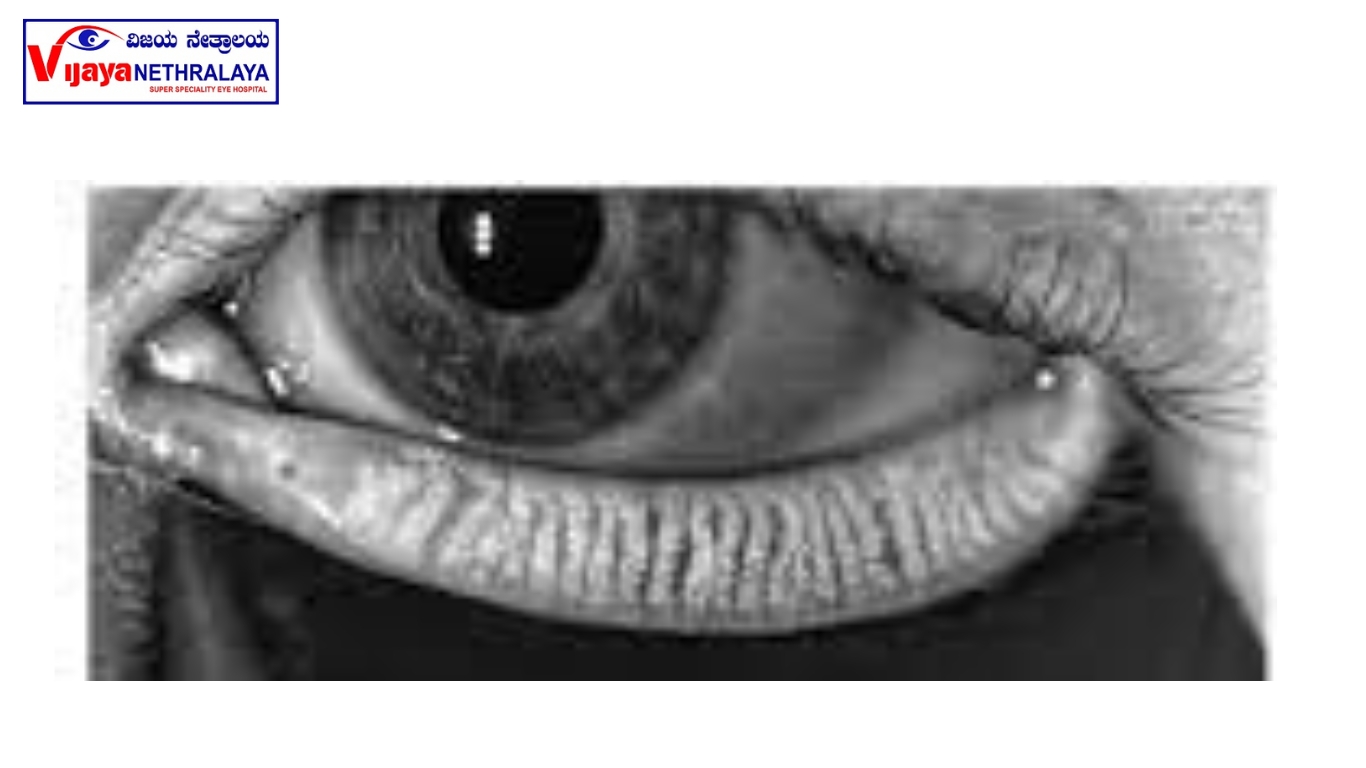Introduction:
Meibomian Gland Dysfunction (MGD) is a common eye condition that affects the meibomian glands, which are responsible for producing the oily layer of tears. Consequently, this condition can lead to various uncomfortable symptoms and potentially impact your overall eye health. In this article, we will delve into MGD in detail, examining its causes and symptoms and exploring the available treatment options.
What Is Meibomian Gland Dysfunction?
Meibomian gland dysfunction (MGD) is a disorder that affects the glands in our eyelids called meibomian glands. These glands, found on both the upper and lower eyelids, are responsible for producing and secreting an oil-like substance called “meibum.” Meibum plays a crucial role in coating the surface of the eyes as part of the tear film, ensuring a smooth layer and preventing the drying of tears. However, in MGD, the meibomian glands become inflamed, leading to an alteration in the secretion of meibum. This, in turn, results in ocular surface disorders and dryness of the eyes.
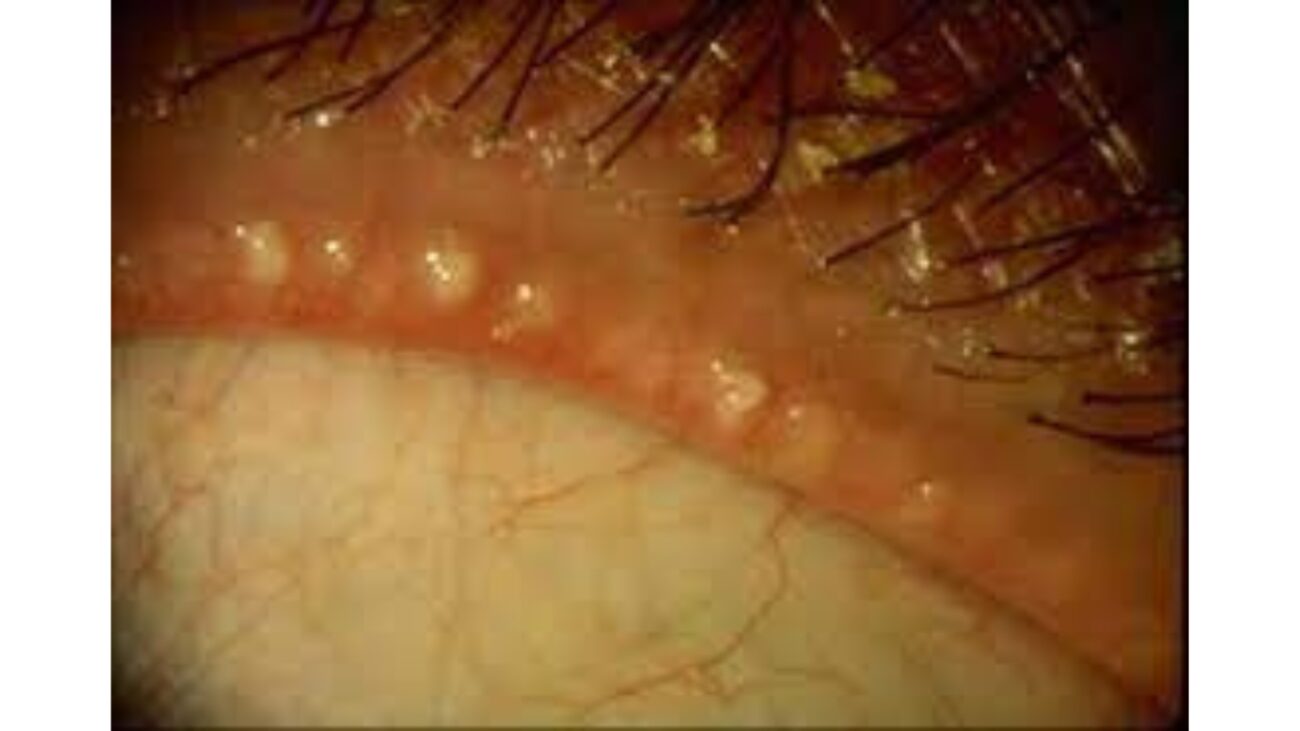
HOW DOES MGD AFFECT YOUR EYES?
In the early stages of the disease, you may not notice anything; but, if left untreated, MGD can cause symptoms. Symptoms of meibomian gland dysfunction depend on the severity of the condition and can vary from person to person. Common symptoms of MGD :
1. Dryness of eyes
2. Burning sensation
3. Itching
4. Redness
5. Watering
6. Fluctuating vision
7. Foreign body sensation
8. Gritty/sand-like sensation in eyes

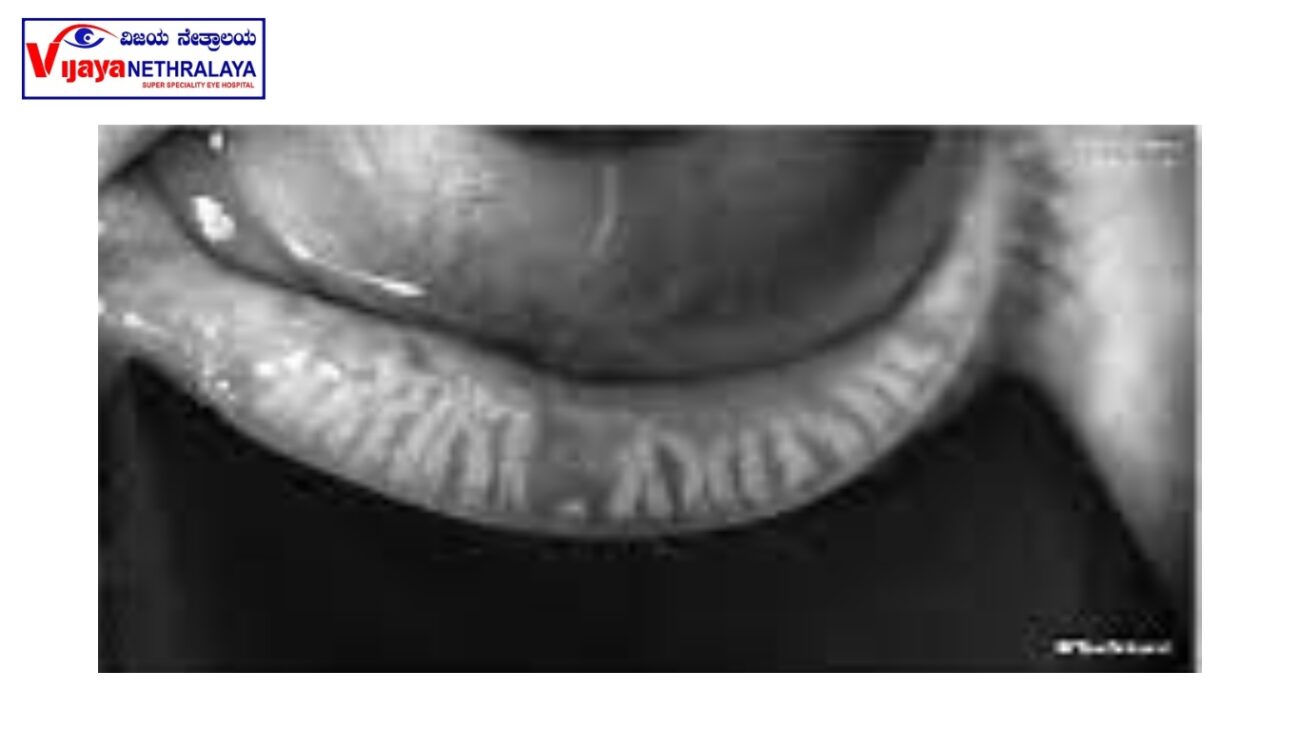
Eyelid swelling resulting from Meibomian gland dysfunction (MGD) can also lead to the formation of styes or chalazions on the eyelids. The symptoms of MGD resemble those of dry eye, as the meibum (oil) produced by the meibomian glands is an integral part of the tear film. Insufficient production or poor quality of meibum can cause the tear film to evaporate, resulting in an irregular tear film or rapid breakdown, thereby impeding proper lubrication of the eyes. Symptoms of MGD may be either constant or intermittent. Additionally, environmental factors such as air conditioning and excessive screen/device use can exacerbate the symptoms.
WHO IS AT RISK TO DEVELOP MGD?
The risk of Meibomian gland dysfunction (MGD) increases with age, as individuals over the age of 40 have a higher likelihood of developing MGD compared to the younger population. Furthermore, make-up products, such as eyeliner, can contribute to MGD by obstructing the openings of the meibomian glands. To minimize this risk, it is important to clean the eyelids thoroughly before going to bed at night.
Other risk factors include:
1. Contact lens wear
2. Systemic conditions like Sjogren’s syndrome, SJS, psoriasis
3. Blepharitis
4. Use of Isotretinoin for acne treatment
5. Hormone replacement therapy
HOW IS MGD TREATED?
To improve eyelid health and effectively remove the crusts, dead skin, oil, and germs that accumulate on the eyelid margins, you can implement several general measures. Firstly, you should regularly clean your eyelids using a gentle, hypoallergenic cleanser or baby shampoo. Additionally, you can apply warm compresses, such as a warm washcloth or a specialized eye mask, to your eyelids to facilitate the loosening and removal of debris. Moreover, depending on the severity of Meibomian gland dysfunction (MGD), your ophthalmologist may recommend various treatments. These treatments may include prescribing medications, such as antibiotics or anti-inflammatory eye drops, or performing procedures like eyelid hygiene, meibomian gland expression, or thermal pulsation therapy.
1. WARM COMPRESSES:
- Heat applied to the eyelid margins helps in the better outflow of the eyelid glands.
- Place a warm, wet cloth on the closed eyes to apply heat on the eyelids for about 2-3 minutes.
- Ensure to apply warm compresses on your eyelids a minimum of two times daily.
- Electronic eyelid heating devices are also available for in-office use for a longer duration of heat therapy and can be useful in cases of unsuccessful at-home warm compress treatment.
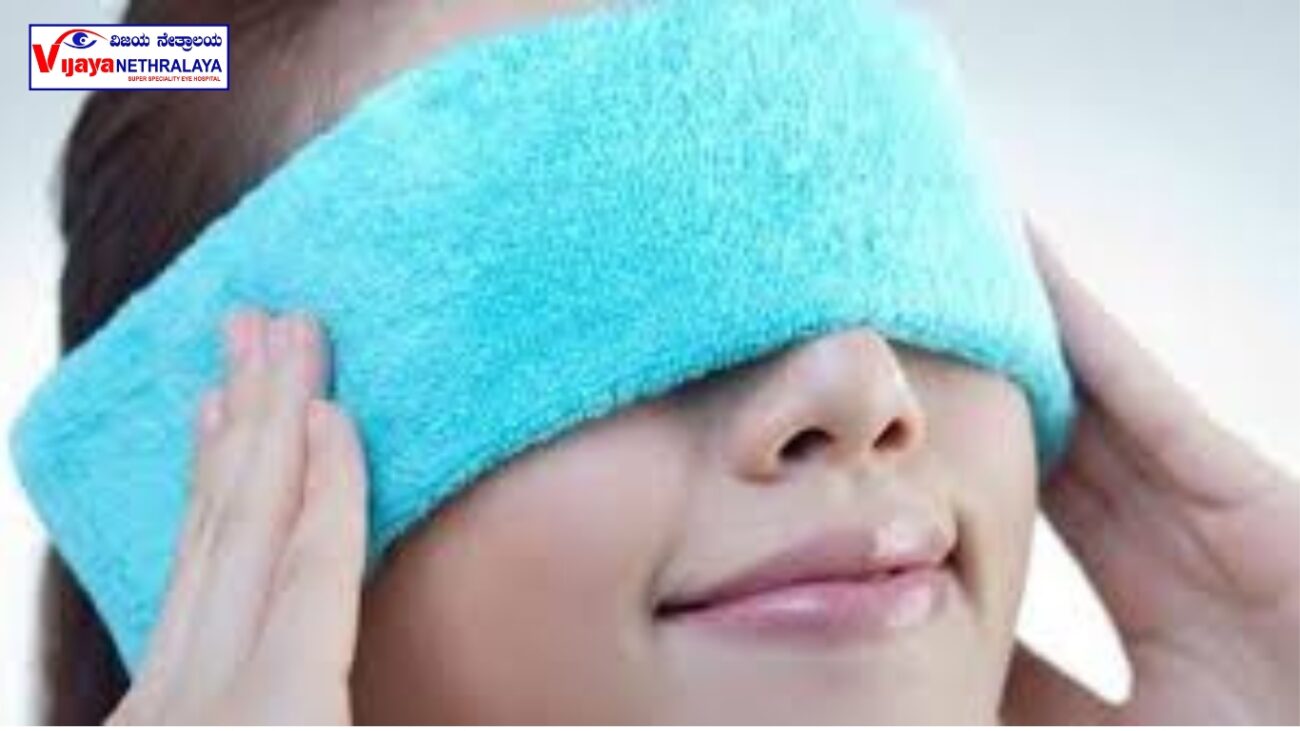
2. LID MASSAGE—Can be done after applying the warm compress
3. LID SCRUB:
- Cleaning the eyelids helps in removing oil, germs, and crusting, which can block the meibomian gland openings.
- Using a warm washcloth on the tips of the fingers, gently wipe along the eyelashes on the upper and lower eyelids. You can use a mild soap or diluted baby shampoo.
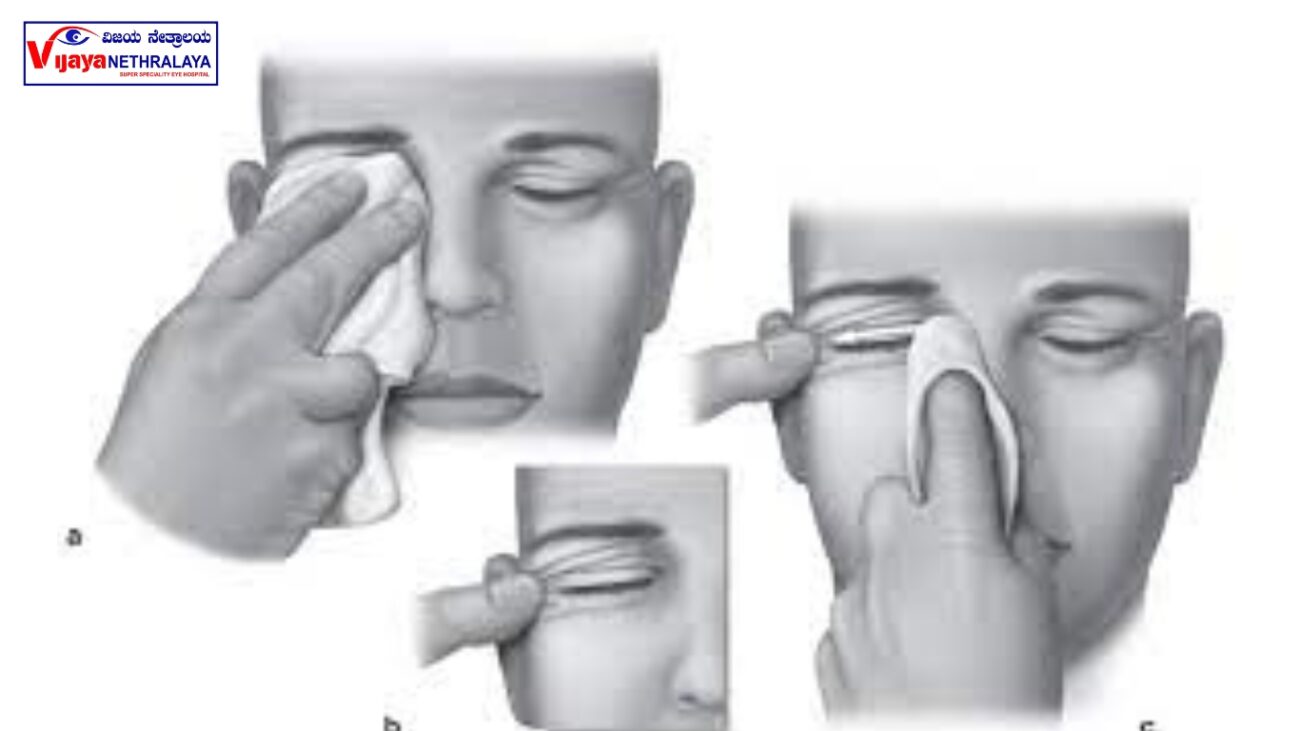
4. ANTIBIOTICS:
- Even though MGD is not actually an eyelid infection, antibiotics can help with the swelling and secondary infection.
- The ophthalmologist may prescribe either an antibiotic eye drop or eye ointment or tablets.
5. LUBRICANT EYE DROPS – Can help with the relief of symptoms
Author Details:

Dr. Sinchana Adyanthaya is a dedicated ophthalmologist with a wide range of experience. She has excelled in routine OPD work, managed high-volume OPDs, and performed various eye procedures. Her fellowship in cornea and refractive surgery has enhanced her skills in advanced corneal investigations and surgeries. Dr. Adyanthaya has published research articles, presented at conferences, and actively participated in academic activities. With her proficiency in multiple languages, she ensures effective communication with patients. Overall, she is a skilled and compassionate ophthalmologist committed to providing excellent care.
Conclusion:
Meibomian Gland Dysfunction (MGD) can significantly impact your eye health and overall well-being. If you experience persistent dryness, discomfort, or other symptoms related to MGD, it is important to seek professional help from an eye care specialist. Early diagnosis and appropriate treatment can help manage the condition effectively and improve your quality of life. Remember to prioritize regular eye examinations and follow the recommended treatment plan to maintain optimal eye health.

